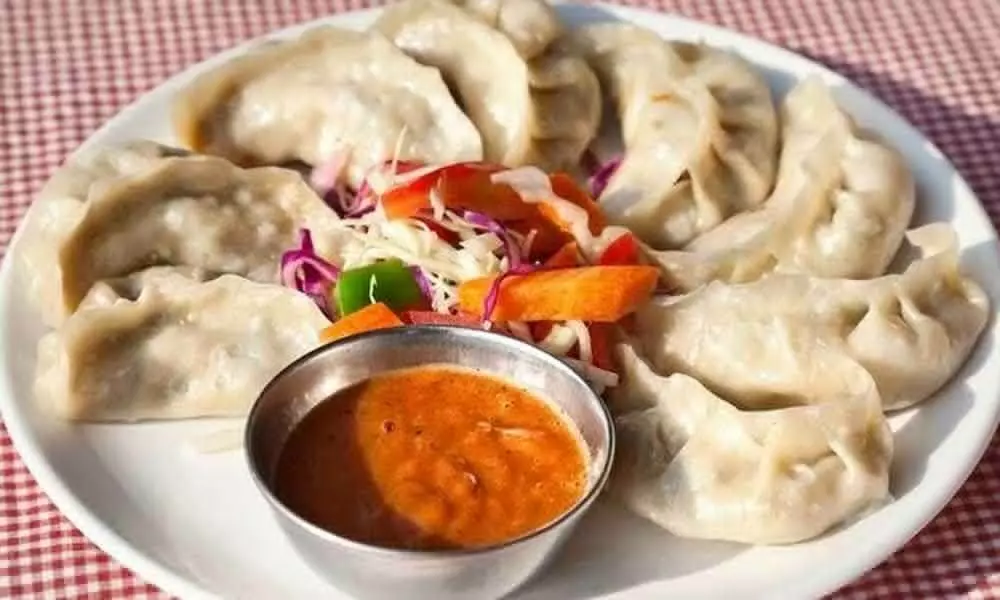Momos are here to stay as India's new favourite food
According to a FICCI and Technopak report, the food services market in India is expected to reach Rs5.52 trn by 2022
image for illustrative purpose

Momo, (a type of dumpling native to Tibet, Bhutan, Nepal, and the Northeast region in India) can be steamed or fried, and filled with meat or vegetables. For Sagar Daryani, co-founder-CEO, Wow! Momo started with a Rs30,000 investment in a kiosk at Spencers in Kolkatta is now a profitable business with 318 outlets across 16 cities - valued at Rs860 crore. Of the 318 stores currently, 302 are Wow! Momo outlets (across 16cities) and 16 (across five cities) are branded Wow! China, a fast-food Chinese cuisine format launched in December 2018. Wow! Momo is expected to close the current financial year with Rs 180 crore- Rs 190 crore revenue and a total of 350 stores/kiosks. It claims to have an Ebitda margin of 10 per cent.
Binod Homagai, the other co founder is a Nepali and the chef in the business. The company now has 14 varieties of Momos and is looking to be fully automated. In 2015, they offered Shah Miftaur Rahman, 32, their college batchmate, 10 per cent equity and a co-founder designation. Rahman, a chartered accountant, was working with PwC India as vice president prior to joining the startup. Currently he looks after the finances of the business.
Momo, which is considered to be the number one street food in India, is estimated to be close to $2.7 billion market. Nearly 97 per cent of this is unorganised. Ready-to-eat momo brand Prasuma Momos is now available in 70-odd cities across the country. Plans are afoot to increase its presence by venturing into newer towns and cities. It also plan to scale this up to 140 by March 2022 and then to 200 cities by the end of next year. We are expecting 20-22 per cent growth in sales on a month-on-month basis.
The first step is to prep vegetables for the fillings. A dumpling gets its flavour from the filling – whether it's all vegetables, meat or a mix of both. For shredding vegetables, clean and pat dry celery and carrots. Then chop them into large chunks. Thoroughly wash spinach and roughly chop it. Next, peel garlic pods and also wash and peel a one inch piece of ginger root. Similarly, cube a small onion. Often in America the only small onions are shallots. Transfer all the vegetables, prepared above, to a food processor and pulse to shred, but not so fine that it's a puree. Remove into a large mixing bowl and add all the seasonings. Before you start filling and sealing dumpling wrappers, take a deep pot – at least 3 to 4 inches deep, add 1 cup of water to it and let it come up to a boil on medium low heat.
Take out your bamboo steamer and clean it with a damp cloth. Oil and prepare the steamer before using it. Lining it is optional but helps keep the dumplings intact when they are removed after cooking. Keep a bowl of water handy. Then take a wrapper in your palm and put about a teaspoon worth of filling in the center. Dip a finger in the water and trace a wet line all along the edges of the wrapper. Seal the edges, either lifting them up to the center to make pockets like below or any way you fancy. Make sure all the edges are sealed – that's where the wet edges come handy. Apply more water if it's not enough.
As you finish shaping and sealing dumplings, place them in the steamer – that is just sitting on the counter not in the pot of water. Space them evenly. Then, place in the pot with boiling water and cover with the lid. Steam for about 10 minutes, which is usually enough to cook them through. Open the lid and check at the 7 or 8 minute mark. The dumpling wrapper will turn opaque so that you'll be able to see the colour of the filling. This is a good indication that momos are ready.
Momo are traditionally steamed but can also be deep-fried or pan-fried. Momo is usually served with chili garlic sauce and pickled daikon in Tibet. In Nepal, popular dipping sauces include tomato-based chutneys or sesame or peanut or soybean-based sauces. According to a FICCI and Technopak report, the food services market in India is expected to reach Rs 5.52 trillion by 2022. The reports also highlights that Chinese cuisine is the second most non-domestic cuisine consumed in India.

